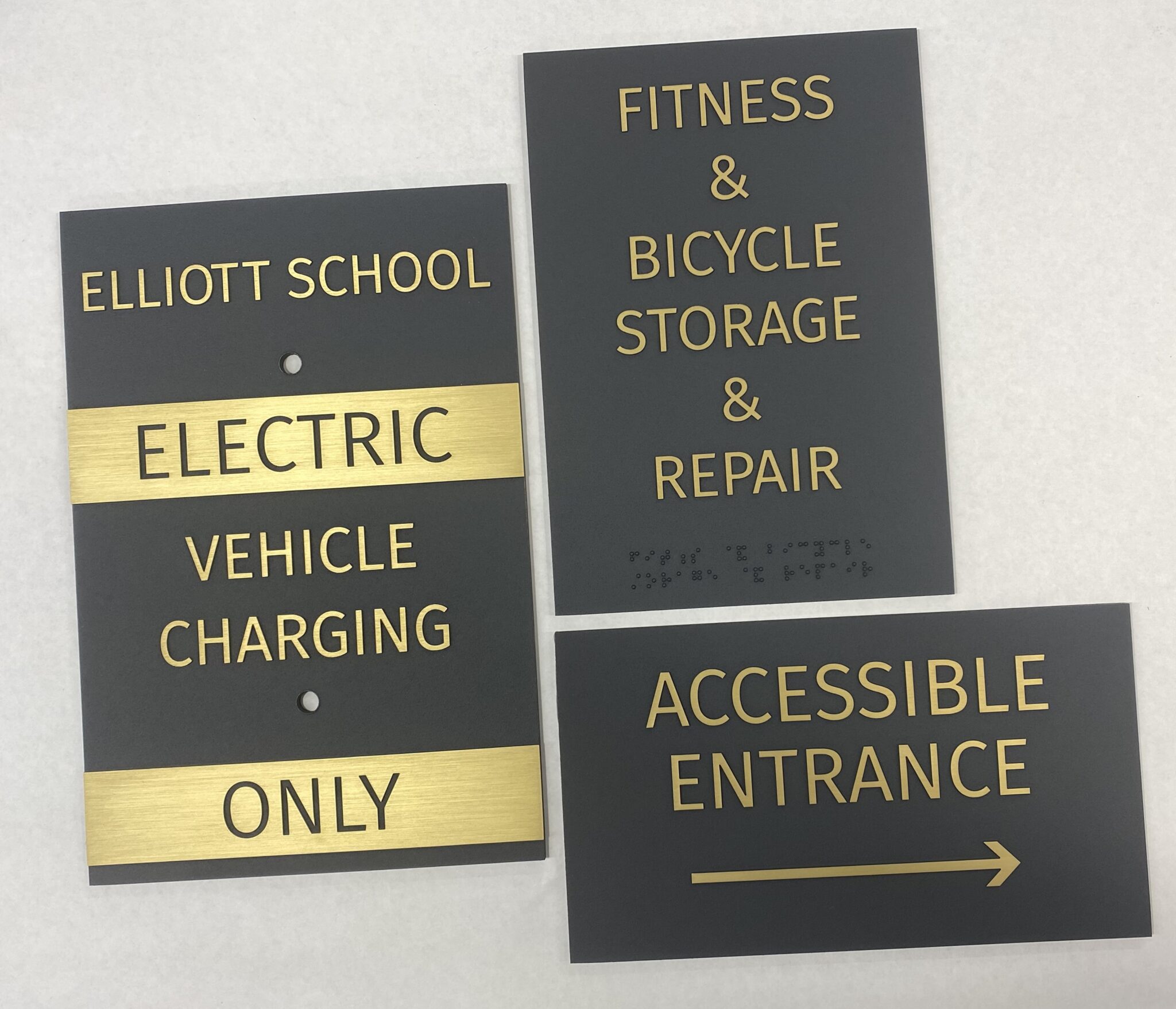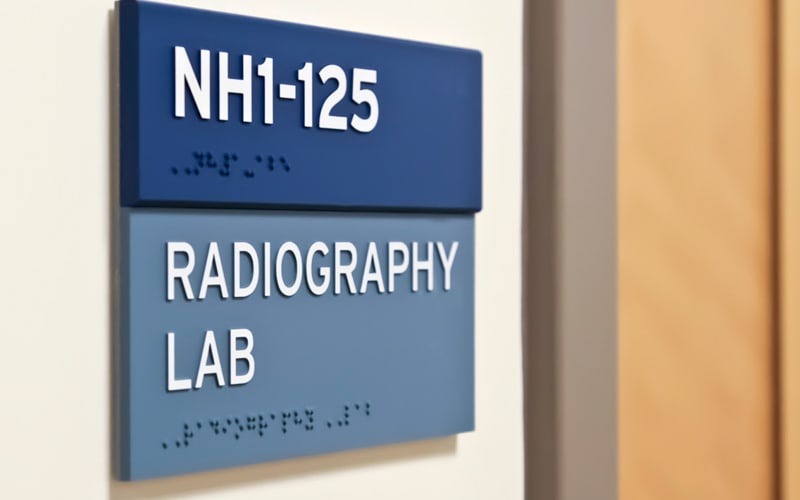The Duty of ADA Signs in Adhering To Ease Of Access Criteria
The Duty of ADA Signs in Adhering To Ease Of Access Criteria
Blog Article
ADA Signs: Guaranteeing Ease Of Access and Compliance in Public Spaces
ADA signage plays a vital role in ensuring ease of access and conformity within public areas, substantially contributing to an inclusive setting for individuals with handicaps. As we explore the nuances of ADA signs, from tactile functions to create complexities, it's vital to think about how these aspects integrate to support the rights of all individuals.
Importance of ADA Signage
In modern-day culture, the importance of ADA signs expands beyond mere conformity with legal mandates to personify a dedication to inclusivity and ease of access for all people. These indications are essential in developing environments where individuals with impairments can browse public spaces with the exact same simplicity and self-reliance as those without handicaps. By supplying standardized and clear info, ADA signs guarantees that everybody can access centers, solutions, and details without obstacles.
The significance of ADA signs depends on its capability to enhance the lifestyle for people with disabilities by promoting equivalent gain access to. It gets rid of the challenges that might otherwise hinder their ability to participate completely in neighborhood life. These indications offer as noticeable signs of a company's devotion to variety and equal rights, showing more comprehensive societal worths that promote the civil liberties and self-respect of all individuals.
Additionally, ADA signage plays an important role in public safety. By assisting people to leaves, toilets, and other essential centers, it ensures that all individuals, regardless of physical ability, can evacuate securely during emergencies. In recap, ADA signage is not just a regulative need however a powerful tool for cultivating a fair and comprehensive society.
Crucial Element of Conformity

Placement is vital; indicators need to be mounted in locations that are conveniently visible and obtainable. Typically, signage needs to be mounted between 48 and 60 inches from the ground to make sure ease of access for both standing and mobility device customers. Tactile elements, such as Braille, are crucial for people with visual disabilities, supplying vital information in a non-visual layout.
High-contrast shades between the message and history are essential to enhance readability for people with low vision. The ADA mandates specific comparison ratios to make sure quality. Additionally, character size is a vital consideration, with minimal height requirements dictated by the seeing range to make certain readability from various angles.
Design Factors To Consider for Access
Creating available signage calls for a precise approach to ensure it meets the needs of all individuals, specifically those with impairments. This includes taking into consideration different style components that enhance readability and usability. Trick elements consist of the selection of typeface, shade comparison, and tactile functions. Fonts need to be sans-serif, with clear and straightforward letterforms, to facilitate simple reading. The size of the message is similarly critical, with ADA guidelines suggesting a minimum height based on seeing range to make certain readability.
Contrasting colors in between message and history are vital for visibility, especially for people with aesthetic problems. A high contrast ratio assists distinguish the text from its background, enhancing readability under various lights conditions. Additionally, tactile elements, such as Braille and elevated characters, are important for individuals that are blind or have low vision. These aspects must be situated at a regular height and setting to guarantee very easy accessibility and understanding.
Moreover, the placement of signage plays a considerable function in ease of access. Indicators ought to be set up in areas that are easily reachable and unobstructed. Ensuring that signage is placed at suitable heights and angles enables all users, consisting of those utilizing wheelchairs, to engage with them efficiently.
Common Blunders to Stay Clear Of

Another common mistake is the incorrect placement of signage. ADA guidelines specify precise elevation and place needs to make sure that indications are obtainable and conveniently visible by all individuals, consisting of those making use of mobility devices. Neglecting these guidelines not just hinders ease of access but additionally takes the chance of non-compliance with legal criteria.
Furthermore, inadequate comparison in between text and history is a regular oversight. Ample comparison is essential for readability, especially for individuals with low vision. Developers in some cases choose colors that are aesthetically attractive however lack the essential contrast, providing the text tough to determine.
Finally, some designers fall short to include tactile aspects, such as Braille, which are crucial for people that are blind. Leaving out these functions not just leads to non-compliance with ADA guidelines but likewise restricts accessibility for a segment of the population that depends on responsive details.
Future Trends in Signs
Innovations in innovation and raising recognition of inclusivity are shaping the future fads in signage layout. As culture comes to be more aware of varied needs, the combination of wise technologies right into signs is getting traction. Digital signage, as an example, is advancing to include interactive features and real-time updates, which can be crucial in supplying this content vibrant info in public spaces. These indicators usually integrate touch screens or gesture-based controls, making it possible for customers to browse content tailored to their specific More Help demands.
One more emerging fad is the usage of enhanced reality (AR) to enhance user experience. AR-enabled signs can overlay digital information onto the physical setting, providing aesthetically impaired people with auditory or haptic feedback. ADA Signs. This technology not just improves availability however likewise produces an interesting experience for all customers
Sustainability is additionally a substantial element affecting signage fads. Environment-friendly products and energy-efficient lighting remedies are being prioritized to line up with global environmental objectives. In addition, developments in products science are causing the growth of more sturdy and weather-resistant signs.
Conclusion
ADA signs plays a vital duty in assuring ease of access and conformity within public areas by incorporating responsive components, high-contrast colors, and strategic placement. The adherence to ADA criteria not only assists in secure navigating for people with specials needs but additionally symbolizes an organization's devotion to variety and inclusivity. By avoiding common errors and accepting future trends, public rooms can continue to progress these worths, ensuring that the legal rights and self-respect of all people are valued and promoted.
ADA signage plays a crucial role in ensuring access and compliance within public spaces, dramatically adding to an inclusive setting for people with handicaps. As we explore the nuances of ADA signage, from tactile attributes to design intricacies, it's essential to take into consideration just how these components coalesce to copyright the civil liberties of all individuals.In contemporary culture, the importance of ADA signs expands beyond mere conformity with lawful mandates to personify a commitment to inclusivity and availability for all individuals. next By supplying clear and standard info, ADA signs makes sure that everybody can access facilities, solutions, and info without obstacles.
ADA signage plays a vital duty in guaranteeing ease of access and conformity within public areas by including responsive elements, high-contrast shades, and calculated positioning. (ADA Signs)
Report this page